Pierre Berthet-Rayne
SplineFormer: An Explainable Transformer-Based Approach for Autonomous Endovascular Navigation
Jan 08, 2025Abstract:Endovascular navigation is a crucial aspect of minimally invasive procedures, where precise control of curvilinear instruments like guidewires is critical for successful interventions. A key challenge in this task is accurately predicting the evolving shape of the guidewire as it navigates through the vasculature, which presents complex deformations due to interactions with the vessel walls. Traditional segmentation methods often fail to provide accurate real-time shape predictions, limiting their effectiveness in highly dynamic environments. To address this, we propose SplineFormer, a new transformer-based architecture, designed specifically to predict the continuous, smooth shape of the guidewire in an explainable way. By leveraging the transformer's ability, our network effectively captures the intricate bending and twisting of the guidewire, representing it as a spline for greater accuracy and smoothness. We integrate our SplineFormer into an end-to-end robot navigation system by leveraging the condensed information. The experimental results demonstrate that our SplineFormer is able to perform endovascular navigation autonomously and achieves a 50% success rate when cannulating the brachiocephalic artery on the real robot.
Guide3D: A Bi-planar X-ray Dataset for 3D Shape Reconstruction
Oct 29, 2024Abstract:Endovascular surgical tool reconstruction represents an important factor in advancing endovascular tool navigation, which is an important step in endovascular surgery. However, the lack of publicly available datasets significantly restricts the development and validation of novel machine learning approaches. Moreover, due to the need for specialized equipment such as biplanar scanners, most of the previous research employs monoplanar fluoroscopic technologies, hence only capturing the data from a single view and significantly limiting the reconstruction accuracy. To bridge this gap, we introduce Guide3D, a bi-planar X-ray dataset for 3D reconstruction. The dataset represents a collection of high resolution bi-planar, manually annotated fluoroscopic videos, captured in real-world settings. Validating our dataset within a simulated environment reflective of clinical settings confirms its applicability for real-world applications. Furthermore, we propose a new benchmark for guidewrite shape prediction, serving as a strong baseline for future work. Guide3D not only addresses an essential need by offering a platform for advancing segmentation and 3D reconstruction techniques but also aids the development of more accurate and efficient endovascular surgery interventions. Our project is available at https://airvlab.github.io/guide3d/.
Autonomous Catheterization with Open-source Simulator and Expert Trajectory
Jan 20, 2024
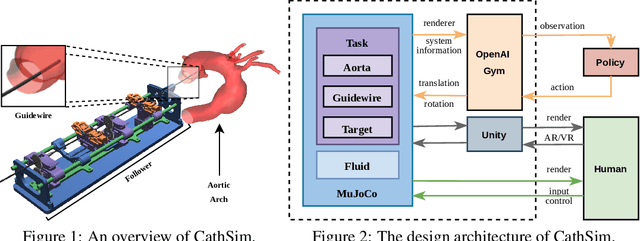


Abstract:Endovascular robots have been actively developed in both academia and industry. However, progress toward autonomous catheterization is often hampered by the widespread use of closed-source simulators and physical phantoms. Additionally, the acquisition of large-scale datasets for training machine learning algorithms with endovascular robots is usually infeasible due to expensive medical procedures. In this chapter, we introduce CathSim, the first open-source simulator for endovascular intervention to address these limitations. CathSim emphasizes real-time performance to enable rapid development and testing of learning algorithms. We validate CathSim against the real robot and show that our simulator can successfully mimic the behavior of the real robot. Based on CathSim, we develop a multimodal expert navigation network and demonstrate its effectiveness in downstream endovascular navigation tasks. The intensive experimental results suggest that CathSim has the potential to significantly accelerate research in the autonomous catheterization field. Our project is publicly available at https://github.com/airvlab/cathsim.
3D Guidewire Shape Reconstruction from Monoplane Fluoroscopic Images
Nov 19, 2023Abstract:Endovascular navigation, essential for diagnosing and treating endovascular diseases, predominantly hinges on fluoroscopic images due to the constraints in sensory feedback. Current shape reconstruction techniques for endovascular intervention often rely on either a priori information or specialized equipment, potentially subjecting patients to heightened radiation exposure. While deep learning holds potential, it typically demands extensive data. In this paper, we propose a new method to reconstruct the 3D guidewire by utilizing CathSim, a state-of-the-art endovascular simulator, and a 3D Fluoroscopy Guidewire Reconstruction Network (3D-FGRN). Our 3D-FGRN delivers results on par with conventional triangulation from simulated monoplane fluoroscopic images. Our experiments accentuate the efficiency of the proposed network, demonstrating it as a promising alternative to traditional methods.
CathSim: An Open-source Simulator for Autonomous Cannulation
Aug 02, 2022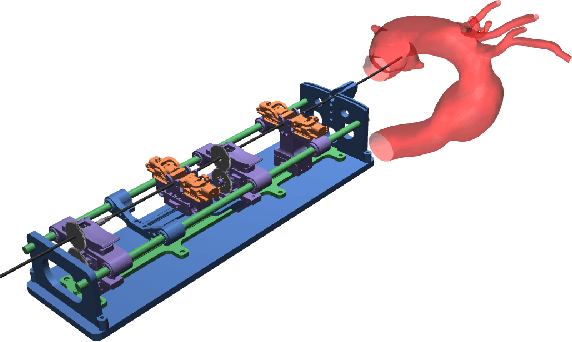
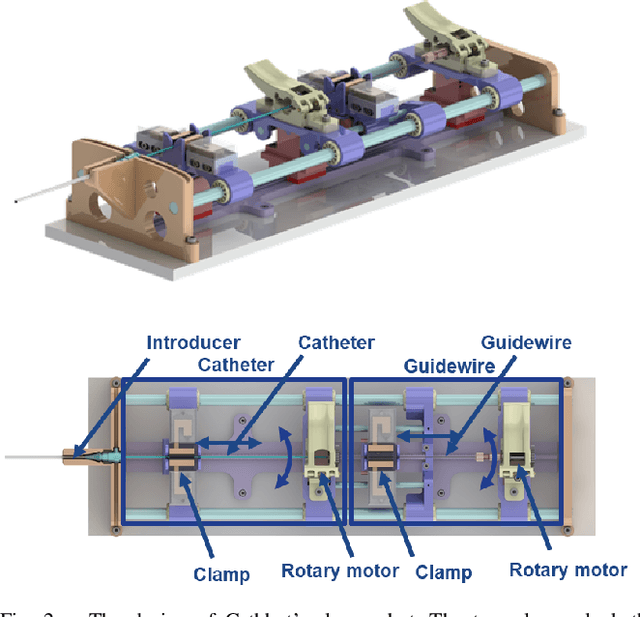
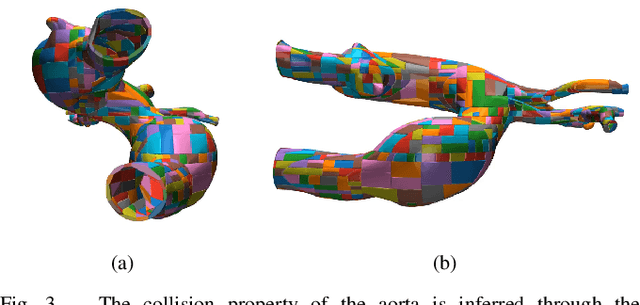
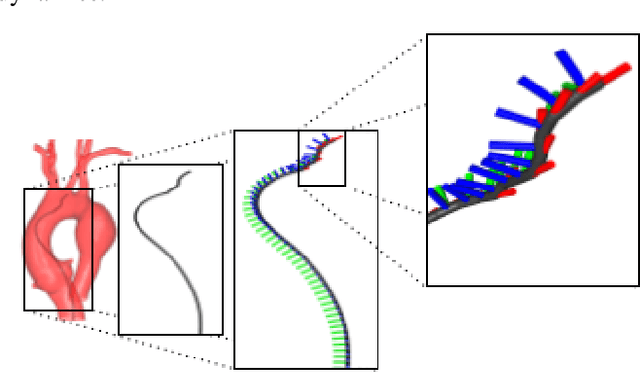
Abstract:Autonomous robots in endovascular operations have the potential to navigate circulatory systems safely and reliably while decreasing the susceptibility to human errors. However, there are numerous challenges involved with the process of training such robots such as long training duration due to sample inefficiency of machine learning algorithms and safety issues arising from the interaction between the catheter and the endovascular phantom. Physics simulators have been used in the context of endovascular procedures, but they are typically employed for staff training and generally do not conform to the autonomous cannulation goal. Furthermore, most current simulators are closed-source which hinders the collaborative development of safe and reliable autonomous systems. In this work, we introduce CathSim, an open-source simulation environment that accelerates the development of machine learning algorithms for autonomous endovascular navigation. We first simulate the high-fidelity catheter and aorta with the state-of-the-art endovascular robot. We then provide the capability of real-time force sensing between the catheter and the aorta in the simulation environment. We validate our simulator by conducting two different catheterisation tasks within two primary arteries using two popular reinforcement learning algorithms, Proximal Policy Optimization (PPO) and Soft Actor-Critic (SAC). The experimental results show that using our open-source simulator, we can successfully train the reinforcement learning agents to perform different autonomous cannulation tasks.
 Add to Chrome
Add to Chrome Add to Firefox
Add to Firefox Add to Edge
Add to Edge